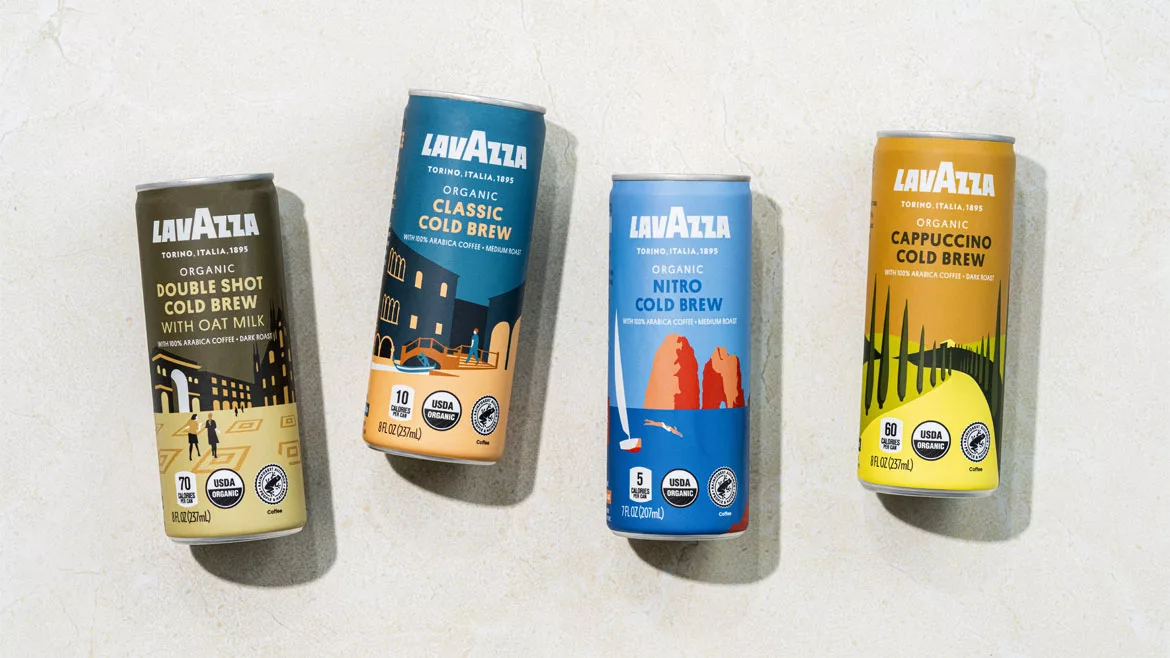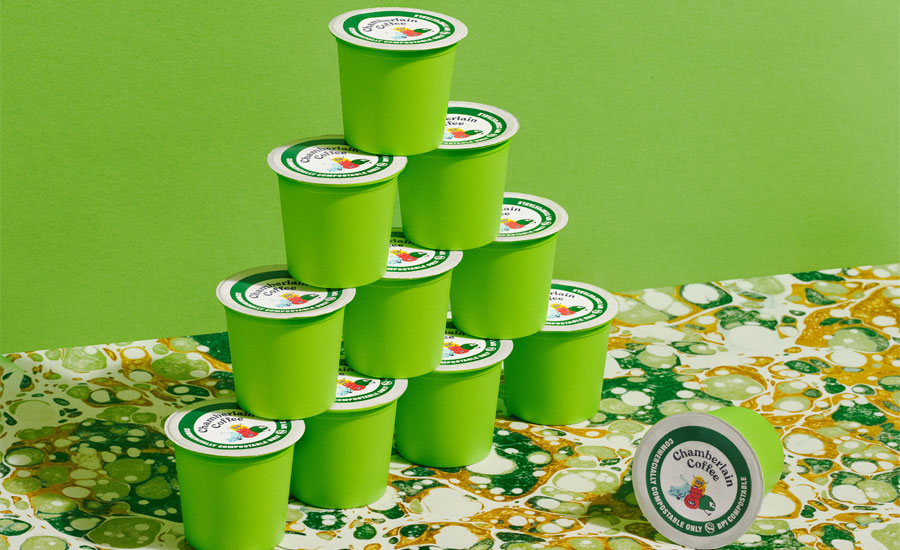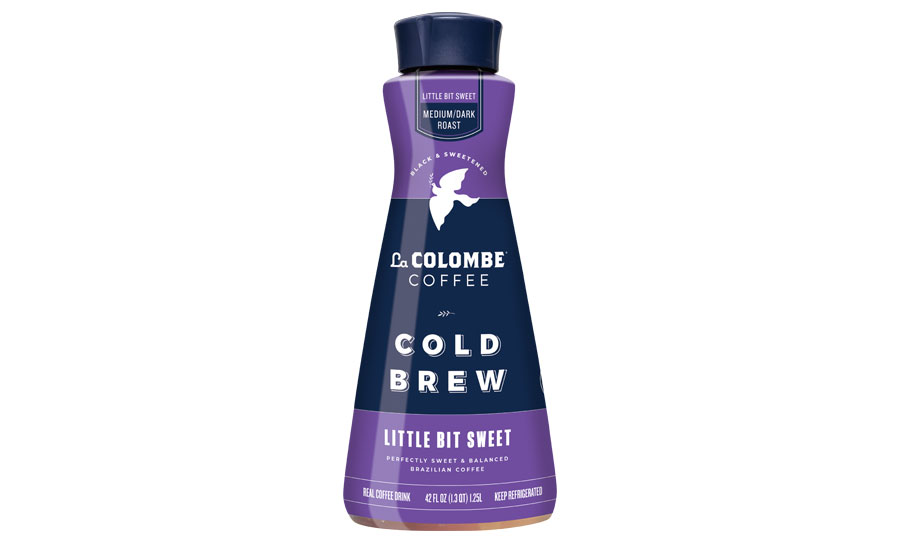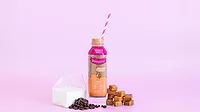2023 State of the Beverage Industry | Convenience, product variety drive coffee drink categories
Cold brews, iced coffee segment see gains in market performance

Image courtesy of Lavazza
In the post-pandemic world, as economic conditions continue to influence the coffee and RTD coffee market, experts note that convenience is driving growth in the category, with many consumers still enjoying their coffee at home.
Caleb Bryant, associate director of food and drink at Mintel, Chicago, noted in Beverage Industry’s September 2022 issue that total retail coffee sales hit an estimated $18.9 billion in 2022, a 33% increase from 2017.
“Current economic conditions largely benefit the retail coffee market as consumers increasingly cut back on their foodservice coffee expenditures,” Bryant explained. “Retail coffee is positioned for continued growth, especially as more consumers source specialty coffee drinks from home, but economic forces will dictate the market’s trajectory; consumers will reduce their home coffee expenditures if the economy worsens or enters a prolonged period of uncertainty.”
Bryant added that among the array of coffee segments, such as whole bean, ready-to-drink (RTD) and instant coffee, he suspected that single-cup and RTD are the fastest-growing segments.
Sally Lyons Wyatt, executive vice president and practice leader at Chicago-based Circana, explained in Beverage Industry’s September 2022 issue, that coffee, not including RTD or refrigerated beverages, has seen growth online and with single-serve pods.
According to data from Circana, the overall coffee category saw a sales increase of 10.2%, totaling $12.3 billion in total U.S. multi-outlets with convenience stores for the 52 weeks ending May 21. Although dollar sales were up, Circana data show that unit sales were down 3.1% during that same time period.
Meanwhile, the majority of that performance came from the single-cup coffee segment, which saw a sales increase of 7.2%, totaling $5.5 billion for the 52 weeks ending May 21. However, unit sales were down 2.1% for the same time period.

Wyatt pointed to single-cup, as well as the coffee additives/flavorings segment, as “providing positive impacts with dollars, units and volume.”
“Creating a specialized drink coupled with the convenience of having a cup in the home office has transformed the coffee landscape,” Wyatt explained. “Using flavors/additives have boosted the at-home cup of coffee into a unique, tasty offering.”
This is reflected by the coffee additive/flavoring segment’s performance. According to Circana data, the additive/flavoring segment saw a sales increase of 19.3%, totaling $127 million for the 52 weeks ending May 21. Meanwhile, unit sales witnessed an increase of 11.3% for the same time period.
As consumers continue to seek out convenience and variety in their drink options, experts point to the RTD coffee segment, especially cold brew coffee and nitro sub-segments, as gaining traction.
|
|
DOLLAR SALES | % CHANGE vs PRIOR YEAR | MARKET SHARE | % CHANGE vs PRIOR YEAR | |
| 1 | Starbucks | $2,296,629,483 | 10.5 | 64.7 | 0.9 |
| 2 | Monster | $710,134,488 | 4.1 | 20 | -0.9 |
| 3 | Coca-Cola | $175,134,835 | -3.2 | 4.9 | -0.6 |
| 4 | Black Rifle | $132,556,504 | 81.8 | 3.7 | 1.5 |
| 5 | Private label | $61,077,174 | 2 | 1.7 | -0.1 |
|
|
Category Total* | $3,551,022,451 | 9 | 100 | --- |
*Includes brands not listed
Source: Circana, Chicago. Total U.S. supermarkets, drug stores, gas and convenience stores, mass merchandisers, military commissaries, and select club and dollar retail chains for the 52 weeks ending May 21.
Gary Hemphill, managing director of research at Beverage Marketing Corporation (BMC), New York, explained in Beverage Industry’s September 2022 issue, that consumers “have been trading up to products that offer benefits and attributes they want,” and that, in the RTD coffee segment, cold brew and nitro coffees are the most successful examples of this.
“Cold brew in particular has been a big boost to the coffee category,” Hemphill said. “People like its bold and smooth taste profile. Most cold brew is sold at premium pricing, which has given dollar sales an added boost.”
Circana’s Wyatt echoed similar sentiments, noting in Beverage Industry’s September 2022 issue that, where cold brew and nitro sub-segments have provided variety with more options for consumers, “they have also taken away purchases from traditional segments.”
According to data from Circana, dollar sales of the RTD tea/coffee category hit $8.3 billion, a jump of 6.1% from last year for the 52 weeks ending May 21. However, unit sales decreased by 5.2% for the same time period.

Within that market, cappuccino/iced coffee sales totaled $3.5 billion for the 52 weeks ending May 21, a 9% increase. Although dollar sales were up, Circana data show that unit sales were down 1.3% during that same time period.
Mintel’s Bryant pointed to the rising popularity of cold coffees, noting in Beverage Industry's September 2022 issue, that the future of coffee is cold.
“Cold brew coffee is one of the fastest-growing areas of the coffee market, and its rise reflects the high consumer interest in cold coffee beverages,” Bryant said. “Forty-two percent of Gen Z consumers have had RTD coffee in the past three months, compared to only 28% who have had any hot-drip brewed coffee. The future of coffee is cold, and cold brew’s growth signals opportunities for new cold-coffee brewing techniques.”
Bryant also pointed out that social media impacts coffee culture, especially social media influencers — “particularly those on TikTok,” the short video-making app.
|
|
DOLLAR SALES | % CHANGE vs PRIOR YEAR | MARKET SHARE | % CHANGE vs PRIOR YEAR | |
| 1 | Keurig | $1,278,800,514 | 5.3 | 23.2 | -0.4 |
| 2 | Private Label | $1,214,284,485 | 12.8 | 22.9 | 1.1 |
| 3 | JM Smucker Dunkin | $1,024,305,671 | 6.9 | 18.6 | 0.1 |
| 4 | Folgers | $521,799,180 | 2.1 | 9.5 | -0.5 |
| 5 | Peets | $368,725,076 | 2.5 | 6.7 | -0.3 |
|
|
Category Total* | $5,517,916,467 | 7.3 | 100 | --- |
*Includes brands not listed
Source: Circana, Chicago. Total U.S. supermarkets, drug stores, gas and convenience stores, mass merchandisers, military commissaries, and select club and dollar retail chains for the 52 weeks ending May 21.
“Forty-nine percent of Gen Z consumers learn about coffee topics from TikTok, compared to 37% who learn from coffee shop chains,” he explained. “This shift of influence from foodservice to TikTokers ultimately benefits the retail coffee market, suggests opportunities for brands to collaborate with coffee influencers, and indicates the need for brands to create products and develop marketing strategies that align with online trending coffee-related topics.”
Going forward, Circana’s Wyatt expressed in Beverage Industry’s September 2022 issue, that she suspects that RTD coffee will sustain its popularity within the coffee category.
“Given the current and looming economic conditions, our [point-of-view] is that pods and refrigerated RTD will continue to boost sales,” Wyatt explained. “Look for new options in the RTD aisle. Cross-pollination from other aisles might continue as well.
“For the other segments, it is important to look at their channel strategies (including price/size architecture) to ensure they have the right products in the right places at a price they can afford,” she continued. “All segments should leverage targeted communications to communicate benefits and drive excitement for the category and their brands.”
Looking for a reprint of this article?
From high-res PDFs to custom plaques, order your copy today!







